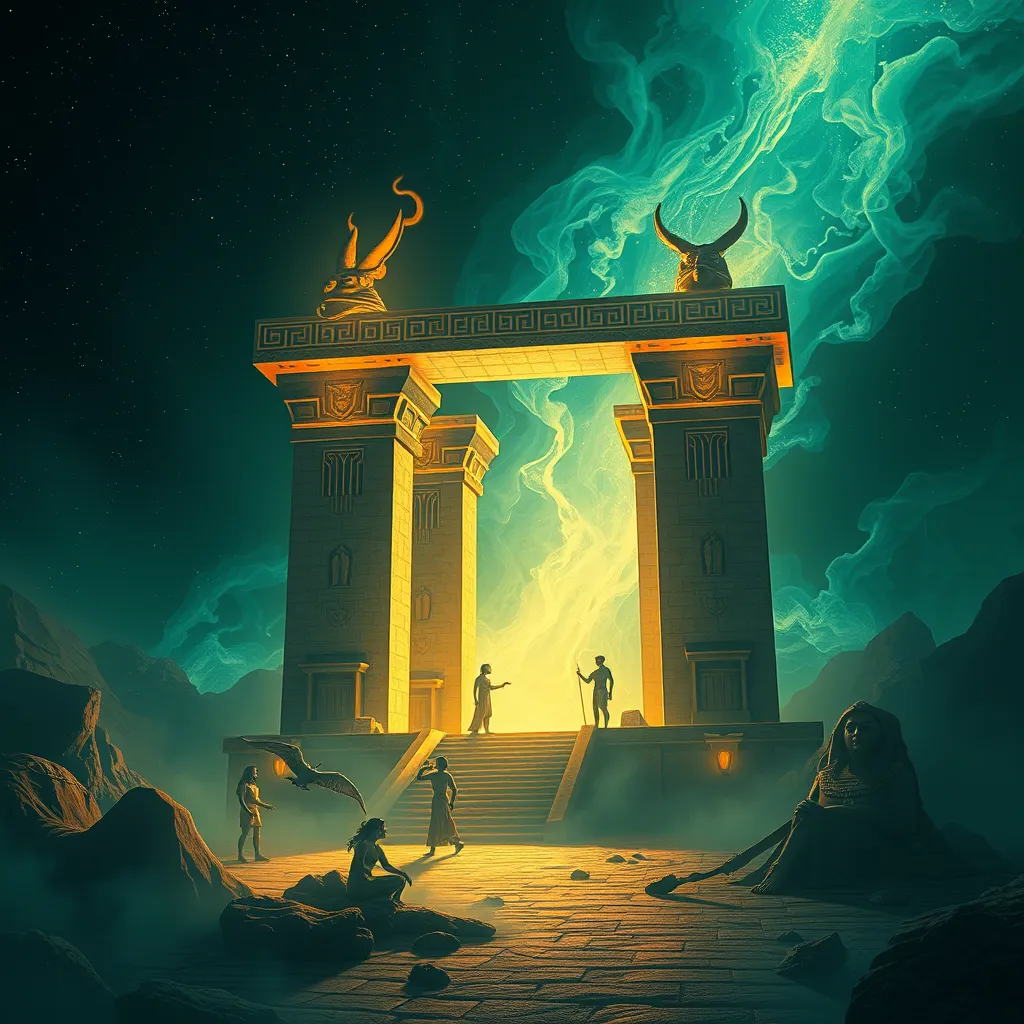The Duat: A Symphony of Spirits
I. Introduction
The Duat, often referred to as the Egyptian underworld, represents a complex realm of existence that held profound significance in Ancient Egyptian mythology. It is a place where the souls of the deceased journey after death, confronting challenges to achieve eternal life. This article explores the Duat’s origins, geography, inhabitants, and its symbolism within the broader context of Egyptian beliefs.
II. The Origins of the Duat
The concept of the Duat emerged from the rich tapestry of Ancient Egyptian spiritual beliefs. It is deeply rooted in their understanding of the afterlife, which was considered a continuation of existence beyond physical death.
- Historical context: The Duat was believed to be a realm located beneath the earth, a vital aspect of the Egyptian cosmology that included the sky and the earth.
- Evolution: Over time, the depiction and understanding of the Duat evolved, influenced by changes in religious practices and societal values.
- Key texts: References to the Duat can be found in several ancient texts, including the Pyramid Texts and the Coffin Texts, which describe the journey of the soul and the various entities that inhabit this realm.
III. The Geography of the Duat
The Duat is often described as a vast, intricate landscape, filled with various regions that symbolize different aspects of the afterlife experience.
- Landscape description: The Duat includes rivers, fields, and dark caverns, each representing different challenges and rewards for the souls that traverse them.
- Symbolic significance: For instance, the Field of Reeds is a place of peace and abundance, while the darker regions are fraught with dangers and obstacles that test the soul’s worthiness.
- Comparison with other underworlds: Unlike the Greek Hades or the Mesopotamian underworld, the Duat is characterized by its dynamic nature, where souls can be judged and reborn, reflecting the Egyptian belief in the cyclical nature of life and death.
IV. The Denizens of the Duat
The Duat is populated by a myriad of spirits and deities, each playing a vital role in the journey of the deceased.
- Overview of spirits: The inhabitants include benevolent deities who assist the souls and malevolent entities that seek to hinder their progress.
- Roles and functions: Gods such as Anubis guide the dead through the Duat, while Osiris, the god of the afterlife, presides over the judgment of souls.
- Notable figures:
- Osiris: The central figure of the Duat, symbolizing resurrection and eternal life.
- Anubis: The jackal-headed god associated with mummification and the protection of graves.
- Ma’at: The goddess of truth and justice, who weighs the hearts of the deceased against her feather to determine their fate.
V. The Journey Through the Duat
The journey through the Duat is a crucial aspect of the afterlife experience, symbolizing the trials and tribulations of the soul.
- Significance of the journey: It represents the soul’s quest for immortality and the ultimate reunion with the divine.
- Challenges faced: Souls encounter various tests, such as navigating through dark passages and evading monstrous guardians.
- Role of spells and rituals: The deceased relied on spells from the Book of the Dead, which provided guidance and protection throughout their journey.
VI. Symbolism and Themes in the Duat
The Duat is rich with symbolism, reflecting deep philosophical themes prevalent in Ancient Egyptian thought.
- Life, death, and rebirth: The cyclical nature of existence is a core theme, emphasizing that death is not an end but a transition.
- Light and darkness: The interplay between light and dark is significant, with light representing purity and truth, while darkness embodies chaos and danger.
- Reflection of cosmology: The structure of the Duat mirrors the broader Egyptian cosmology, illustrating their understanding of the universe and the interconnectedness of all things.
VII. The Duat in Art and Literature
The Duat has been depicted in various forms of art and literature, showcasing its importance in Ancient Egyptian culture.
- Tomb paintings and artifacts: Many tombs feature intricate paintings and carvings that illustrate the journey through the Duat, often depicting scenes of judgment and the afterlife.
- Literary representations: The Pyramid Texts and the Book of the Dead contain rich descriptions of the Duat, providing insights into the beliefs and practices surrounding death and the afterlife.
- Influence on later cultures: The concept of the Duat has influenced various cultures and continues to resonate in modern interpretations of spirituality and the afterlife.
VIII. Conclusion
In summary, the Duat serves as a profound representation of the Ancient Egyptian understanding of life, death, and the journey of the soul. Its rich symbolism and the myriad spirits that inhabit it create a complex narrative that reflects the values and beliefs of an ancient civilization. The legacy of the Duat continues to endure, inspiring modern spirituality and reminding us of the timeless quest for meaning beyond this life. The Duat remains a true “symphony of spirits,” harmonizing the themes of existence, transformation, and the eternal cycle of life.




